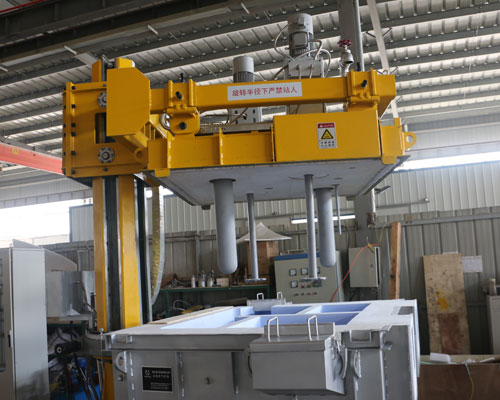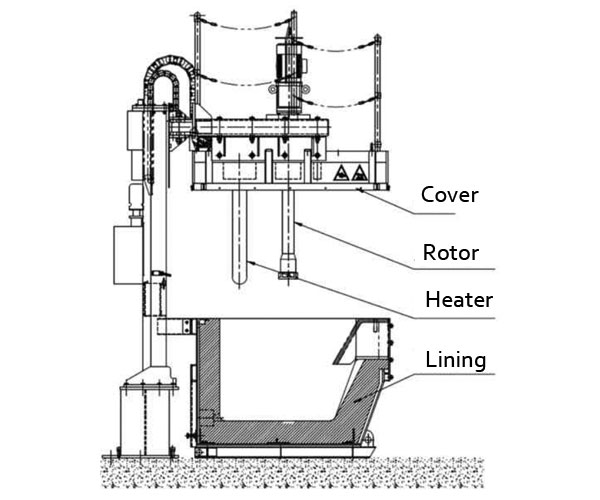The aluminum liquid degasser is the key equipment for aluminum refining, and the graphite rotor is one of the key components of the equipment. The graphite rotor is composed of two parts: a rotor rod and a nozzle.
In the aluminum refining process, the aluminum liquid degasser transmission system drives the graphite rotor to rotate at high speed, and argon or nitrogen is sprayed into the aluminum liquid through the rotor rod and the nozzle to remove the hydrogen and oxide inclusions in the center of the aluminum liquid, so that the aluminum liquid can be purified.
Generally, graphite rotors are made of graphite materials. Graphite is easily oxidized in the air above 600 ℃, and there is no protective atmosphere in the degassing box. The temperature of the molten aluminum can reach about 900 ℃, and the graphite rotor is exposed to red heat in the air. State, oxidation is inevitable, and the result of oxidation makes the rotor shaft gradually thinner until it breaks and is scrapped.
In addition, the graphite rotor is immersed in the aluminum liquid, and generally rotates at a speed of 300 ~ 700r/min and strongly stirs the aluminum liquid. The molten aluminum will cause strong erosion and wear on the rotor, especially the interface between the graphite rotor and the molten aluminum. Corrosion, erosion, abrasion, and air oxidation exist at the same time, making the graphite rotor gradually thinner at the three-phase interface until it breaks. scrapped. Therefore, how to improve the oxidation resistance of graphite rotors and resist the corrosion, erosion and wear of high-temperature aluminum liquid is the key to prolonging the service life of graphite rotors.

Technicians have done a lot of research work to improve the service life of graphite rotors. On this basis, an aluminum dihydrogen phosphate material with high oxidation resistance, corrosion resistance, erosion and abrasion resistance of molten aluminum was prepared, and a complete set of processes for treating graphite rotors with this material was developed. Through this treatment process, the service life of the graphite rotor is increased by more than 5 times than the service life of the graphite rotor processed by pure graphite, and the process is simple, easy to process, and low in cost, and has a wide range of application prospects.
Aluminum dihydrogen phosphate has high temperature resistance, corrosion resistance, thermal vibration resistance, erosion resistance, oxidation resistance and other properties, and has good wettability with graphite materials, and has poor wettability with molten aluminum and does not react. Using the pores of the graphite material, the aluminum dihydrogen phosphate is immersed in it, and then solidified to convert the aluminum dihydrogen phosphate into aluminum polyphosphate. The surface and pores of the graphite rotor after the treatment are filled with aluminum polyphosphate, so that a layer of aluminum polyphosphate protective film is formed on the surface of the exposed graphite particles, and the graphite does not directly contact the air and high-temperature aluminum liquid. This not only increases the density of the graphite rotor and the strength of the graphite rotor, but also greatly improves the oxidation resistance of the graphite rotor and the corrosion, erosion and abrasion resistance of the molten aluminum, thereby greatly improving the service life of the graphite rotor.

